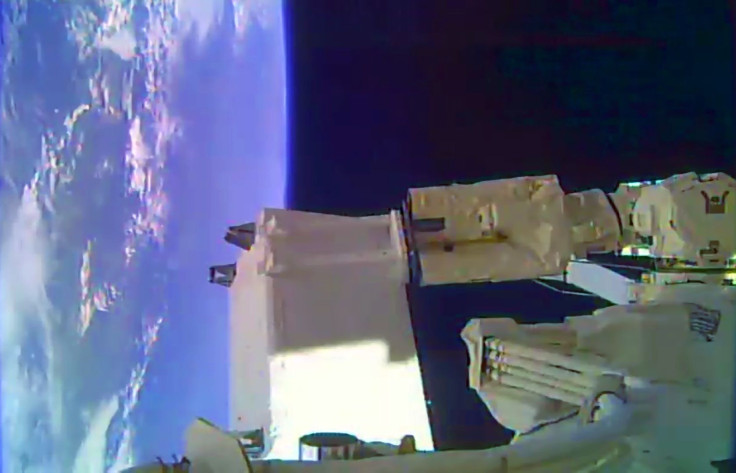ISS-CREAM Serves Up Data On Cosmic Rain From International Space Station

NASA’s Cosmic Ray Energetics and Mass experiment that launched to the International Space Station earlier this month not only has a cool name, the ISS-CREAM, but it does something cool too, it will measure cosmic rain.
The ISS-CREAM was installed on the Japanese Experiment Module-Exposed Facility outside of the ISS last week and is now being prepped by the astronauts on board for an experimental mission. The new experiment is set to last one to three years once the fine tuning is complete. During that time CREAM will collect data on high-energy cosmic ray particles that are moving almost as fast as the speed of light.
These particles from deep space are like a constant rainfall on Earth and have been measured before but never by anything as capable or precise as the ISS-CREAM. Previously the studies of these rays have been done via balloon, which only lasted 191 days, a number the new experiment will likely blow right past.
The ISS-CREAM ironically looks similar in size to a refrigerator. It features more instruments and newer versions of the detectors that were used during balloon missions. Thanks to the placement right on the space station’s doorstep the CREAM will measure cosmic ray particles, more specifically protons, electrons, helium nuclei and the nuclei of other elements as well, according to NASA. The paths of the rays are almost impossible to track and the higher the energy is the lower the chance that it’ll hit a detector, so the more time in space the better.
The hope is that CREAM will be able to record data that will give researchers insight into what gives cosmic rays the energy they have and whether they’re accelerated by a single cause or not. It’s the first space mission that is able to measure the low flux of cosmic rays at a certain point in the cosmic ray spectrum.
The cosmic particles are detected when they collide with one of the instruments attached to CREAM, according to NASA. There are several of these instruments that can detect the rays. A silicon charge detector that measures electrical charges. It does this by producing the impact that then cascades the particles that fall into detectors that can determine the energy. There’s also two scintillator-based detector systems that can identify singly charges electrons and protons, according to NASA.
ISS-CREAM was launched on the 12th SpaceX commercial resupply mission to the ISS. In addition to the ISS-CREAM the nearly 6,000 lb payload included other science experiments like the supplies to continue the growth of food in space. The payload was sent up in one of SpaceX’s Dragon pods that is still attached to the station and won’t return for weeks or months.
© Copyright IBTimes 2024. All rights reserved.




















